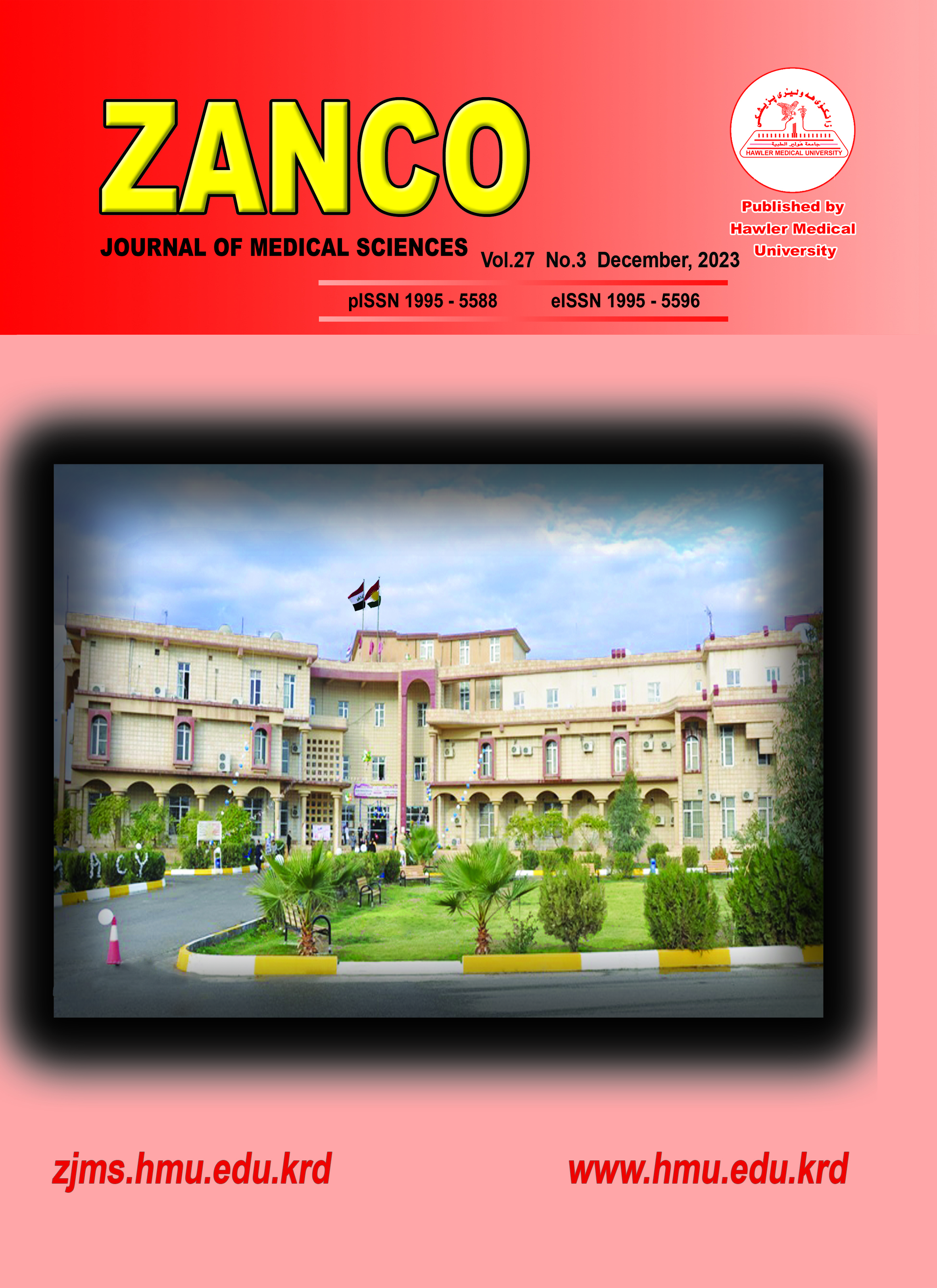Effect of Gender on Mortality and Treatment Outcomes in Pulmonary Tuberculosis: A Retrospective Study
Copyright (c) 2023 Zahir S. Hussein, Kameran H. Ismail (Author)

This work is licensed under a Creative Commons Attribution-NonCommercial-ShareAlike 4.0 International License.
- Articles
- Submited: April 30, 2022
-
Published: December 20, 2023
Abstract
Background and objective: Tuberculosis regarded as a major cause of death word wide despite WHO trials to eradicate it. The aim of this study was to determine the effect of gender difference in treatment outcome and mortality.
Methods: In this retrospective study on pulmonary tuberculosis at the Chest and Respiratory Disease Center in Erbil city. A total 430 patients with pulmonary tuberculosis were studied from January 1st, 2016 to December 31st, 2019 at the Chest and Respiratory Disease Center in Erbil city. The patients were divided in to two category groups; category one, includes severe extra pulmonary tuberculosis, Smear negative or positive seriously infected pulmonary disease, and category two: includes failure of treatment, relapses, and default. The recorded files of 430 patients with TB registered at Chest and Respiratory Disease Center in Erbil city as follows 103 (24%), 107 (24.9%), 109 (25.3%), and 111 (25.8%) patients since 2016, 2017, 2018, and 2019 were analyzed respectively.
Results: The median age ± SD of the patients was 44.03 ± 21.57 years (ranged from 1-93 years) and the female to male to ratio was 1: 1.26. The mortality rate among male patients was 9.5%, while 4.2% among female patients and there was statistically significant (P <0.001) association between gender and treatment outcome. The majority of patients were Category I (83.2% of the males versus 76.7% for females) and there was no statistically significant association between gender and patient categories (P = 0.062). The mortality rate in Category I was 4.1%, while in Category II was 15.9% and there was statistically significant association between patient categories and treatment outcome (P <0.001).
Conclusion: The study concluded that poor prognostic factors that are associated with higher mortality are male gender and patient category two (failure of treatment, relapses, and default).
Metrics
References
- WHO. 2019 Global Tuberculosis Report. 2019 Geneva, Switzerland: WHO; 2019. (13 December 2019).
- WHO, Global Tuberculosis Control, WHO Report. WHO; 2020. Available from: https://www.who.int/teams/global-tuberculosis-programme/tb-reports/global-tuberculosis-report-2020.
- Orhan ER, Temurtas F, Tanrıkulu AC. Tuberculosis Disease Diagnosis Using Artificial Neural Networks. J Med Syst 2010; 34:299–302. https://doi.org/10.1007/s10916-008-9241-x
- Comas CI, Coscolla M, Luo T, Borrell S, Holt KE, Kato-Maeda M, et al. Out-of-Africa migration and Neolithic coexpansion of Mycobacterium tuberculosis with modern humans. Nat Genet 2013; 45:1176–82. https://doi.org/10.1038/ng.2744
- WHO. Global Tuberculosis Control, WHO Report. WHO;2020.https://www.who.int/teams/global-tuberculosis-programme/tb-reports/global-tuberculosis-report-2020.
- WHO. Global tuberculosis reports 2020. https://www.who.int/teams/global-tuberculosis-programme/tb-reports,pdf
- WHO. Global tuberculosis report 2018. https://apps.who.int/iris/handle/10665/274453.
- WHO. Tuberculosis country profiles. Iraq. https://www.who.int/tb/country/data/profiles/en.
- WHO. Tuberculosis control in the Eastern Mediterrean Region: progress report 2009, 2010, http://applications.emro.who.int/dsaf/dsa1060.pdf).
- WHO. Guidance for national tuberculosis programmes on the management of tuberculosis in children. 2nded. Geneva: WHO; 2014.
- WHO. Definitions and reporting framework for tuberculosis—2013 revision. Report No. 9241505346, 2013. Geneva: WHO; 2013.
- WHO, Geneva; 2015. http://who.int/tb/publications/global_report/en/ accessed Dec 18, 2015.
- Durib AK, Blinova EV. Tuberculosis in Baghdad, Iraq 2012-2016: Retrospective Study, Medico-legal Update 2020; 20(4). https://doi.org/10.37506/mlu.v20i4.2010
- Karadakhy K, Othman N, Ibrahimm F, Saeed AA, Hama Amin AAA. Tuberculosis in Sulaimaniyah, Iraqi Kurdistan: A Detailed Analysis of Cases Registered in Treatment Centers, National Research Institute of Tuberculosis and Lung Disease, Iran. Tanaffos 2016; 15(4):197–204. https://www.ncbi.nlm.nih.gov/pmc/articles/PMC5410115/
- Merza MA. A 5-year experience characterizing the demographic and clinical profile and directly observed treatment short-course treatment outcome in National Tuberculosis Center of Duhok province, Iraqi Kurdistan. SAGE Open Med 2020; 8:2050312120921055. https://doi.org/10.1177/2050312120921055
- Al-Dahmoshi HOM, Al-Khafaji NSK, Al-Allak MH. Iraqi tuberculosis (2003-2017): an silent hindrance infection. J Bacteriol Mycol Open Access 2019; 7(4):98‒100. DOI: 10.15406/jbmoa.2019.07.00252
- Lisha PV, James PT, Ravindran C. Morbidity and mortality at five years after initiating category I treatment among patients with new sputum smear positive pulmonary tuberculosis, Indian J Tuberc 2012; 59(2):83–91. https://pubmed.ncbi.nlm.nih.gov/22838205/





